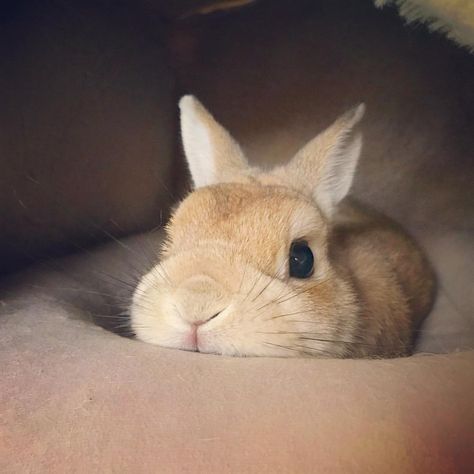If you own a pet rabbit, then you may already know most of its common and weird behaviors. It’s a fact that it’s sometimes difficult to tell what a poker-faced bunny needs because you simply can’t tell. Rabbits don’t make any sound that dogs, cats, and birds use to communicate. Also, pet rabbits are mostly less active than other pets, and this makes it more difficult to understand what it needs.
To find out what your pet rabbit needs, you need to carefully observe it. By careful observation, you will find out a huge deal about its common behaviors and its discrete form of communication. One of these is bruxing.
What is bruxing?

Bruxing is a term used to describe a rabbit’s way of chattering or how it rapidly moves its teeth. Some people call this endearing, while some are not too amused. And if you’ve seen your rabbit doing this, then it could be due to positive or negative behavior.
What your rabbit is trying to tell you

Bruxing is equivalent of purring to a cat but may also be a sign of something worse. Just remember to check your rabbit’s needs ASAP in case it requires medical attention.
Contentment
Like a cat, a rabbit purrs because of contentment. It chatters its teeth, a sound produced by moving teeth quickly while the rabbit keeps still. Experts say that when you hear a rabbit bruxing, then this could be a sign of total satisfaction.
You can initiate bruxing by scratching your rabbit on his favorite spots or stroking and petting it. Sometimes it’s hard to tell if your rabbit is bruxing, so it’s best to hold it close to you so you can feel the purring.
Rabbits who have just eaten or are taking their post-lunch naps are likely to purr. This may simply mean that your rabbit is happy after eating something great, and it loves its nap.
Older rabbits are more likely to purr because of satisfaction compared to smaller bunnies. Usually, smaller bunnies would prefer to run and play rather than sleep after lunch. Thus, are less likely to purr after a hearty meal or in satisfaction.
It is in pain
On the other hand, bunnies may also bruxate due to pain or discomfort. Therefore, it is very important to distinguish the reason for bruxing so you can provide first aid right away. If the bruxing is very loud, then your pet may be calling you for help.
But before wrapping it up and taking it to the vet, be aware of other symptoms that your rabbit is telling you. Check for
- A crouched posture with ears pressed down
- A tight posture as if the rabbit is protecting its tummy or body
- Bulging eyes which could be a sign of severe pain
- Rapid and heavy breathing
- Weakness and loss of appetite
- Increased bruxing when you hold your pet
You must take your pet rabbit to the vet as soon as you notice bruxing with these symptoms. Take your pet to the vet when you notice these symptoms with or without bruxing.
Other possible causes

Unknown to most people, rabbits are more prone to stress compared to other pets because these are very sensitive animals. Bruxing or teeth grinding is, therefore, not just due to physical discomfort but may also be due to emotional pain or distress.
Your pet could be telling you that it’s stressed, nervous, or terrified of a situation. One of the most common signs that a rabbit is stressed or fearful is when it’s jutting out its head. This is a clear sign that there is something wrong.
Your rabbit may be stressed because of the following reasons:
- A new cage mate or a new rabbit inside its cage
- A new pet or animal that you may have at home
- You recently moved to a new home
- You moved its cage outdoors or indoors
- It’s afraid of anything nearby or anything that produces an unfamiliar smell or noise
Rabbits are just like humans as they are not too happy with the change. Bruxing is a way for them to show their stress and to vent out their stress. So when you see or hear your pet rabbit chattering or grinding their teeth, you should just let it be. It’s just one way to release build up stress.
Different bruxing styles

Image Source
Rabbits have different chattering styles, and you should learn your rabbit’s style to identify their needs. Here are some of the most common chattering styles:
- Smooth and uninterrupted bruxing – this could mean that your pet is very giddy about something. This could be the smell of a delicious treat or a toy that it’s planning to chew soon.
- Smooth but interrupted bruxing – if you hear this, then it must be eagerly awaiting something from you. You may already know your routines, and it knows that it’s time for its meal or games.
- Intensified bruxing – this could mean intense pain, discomfort, or anxiety. It’s a must to place your pet in a separate cage or enclosure to help it recover. Use an empty, comfortable, and safe cage or enclosure to keep your pet in the meantime. Don’t forget to check on it now and then to assess its physical and emotional condition.
Bruxing, a sign of a blissful bunny
People who take care of bunnies reveal that there are tell-tale signs that say that the animal is very happy and contented. A rabbit’s ear is its radar, and it is used to find out what’s going on. Both the rabbit’s ears are usually back and are relaxed; this is the ultimate way of telling that the rabbit is very contented.
Rabbits that have bonded will groom one another. It will lick the other rabbit as if it’s saying that he likes her, and I love your company. And when a rabbit is very playful, expect a “binky.” This is an acrobatic jump that is accompanied by body twisting and kicking.
You may also see your pet rabbit grooming or sitting very still and then flop to its side and then lie still for a long time. This is again another way of your pet to show that it is so relaxed, happy, or contented.
How to relieve stress

As we mentioned before, one of the causes of bruxing in rabbits is stress. Your pet may be feeling very stressed or anxious that it may find it hard to control its emotions.
Do you know that a rabbit can die of fright? As we have also said before, rabbits are very sensitive as they can sense fear, excitement, and happiness. Loud sounds coming from a loud stereo, from a loud barking dog or screaming cat, can lead to stress and even cause a heart attack to bunnies. A rabbit can go into shock and die when it is in severe stress. This can happen even if your rabbit is healthy or is not affected by any medical or health condition.
Therefore, it’s important for owners to closely monitor their rabbits and to steer clear of stress.
Treating acute stress
- Don’t pick your rabbit up if it doesn’t want to. If it resists your hold or it tries to escape from your arms, then just let it. But if your pet allows you to hold it, then use a towel to keep it still. The soft towel is comfortable and will reduce symptoms like bruxing,
- As you hold your rabbit, don’t make sudden movements or noise. Talk to your pet and pat it so it will feel relaxed using your voice.
- If your pet does not want to be picked up, seal off access to your pet to keep it safe and to help it recover. If you have a folding cage, then use this to secure your pet. If you don’t have a folding cage, use pillows to create a fence around your pet. Give it space to recover and move about.
- Don’t give it food or water, for now, just let its behavior return to normal. It will soon cease its rapid movements and bruxing.
You may take your pet to the vet if it remains stressed or anxious. Acute attacks usually last for 30 minutes to an hour. If you see your pet struggling and it seems that it’s still anxious or stressed and bruxing, take it the vet.
Preventing stress

You can raise a healthy, versatile pet rabbit by helping it conquer stress and anxiety. One way is to raise your pet with other rabbits. Just like humans, there’s strength in numbers, and bunnies that grow up with their siblings, and their friends are less likely to be anxious. You may also spend more time playing with your pet and taking it outdoors (under the careful supervision, of course). This way, it will learn that other pets like dogs, cats, and birds are nothing to be afraid of. Also, rabbits that receive extra pats, cuddles, and love are less stressed.


